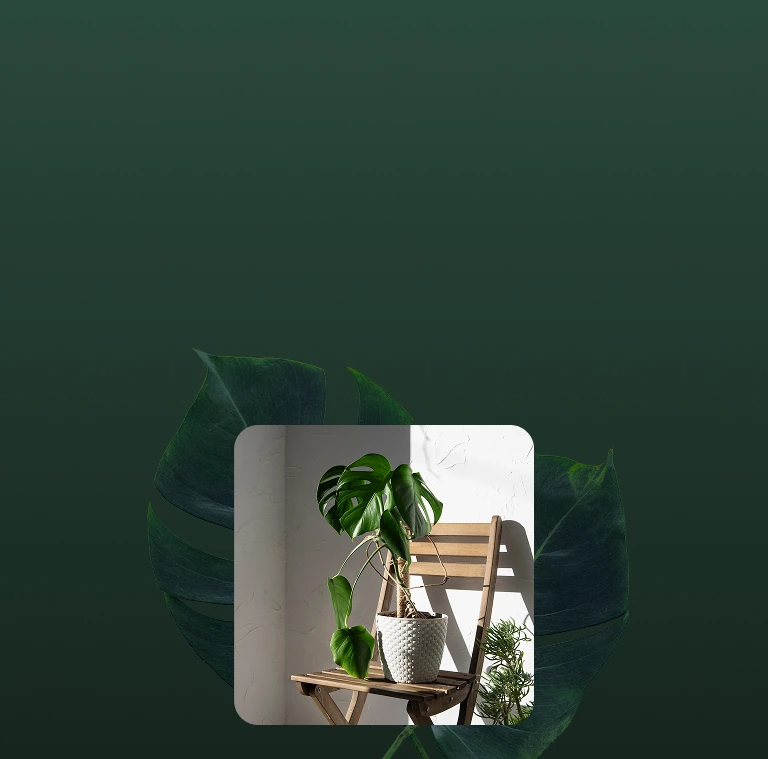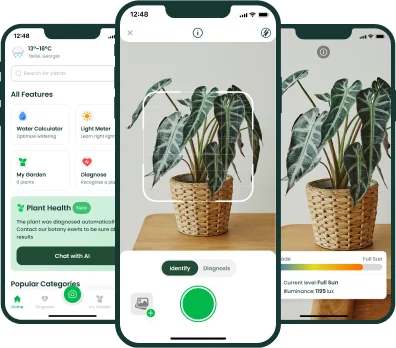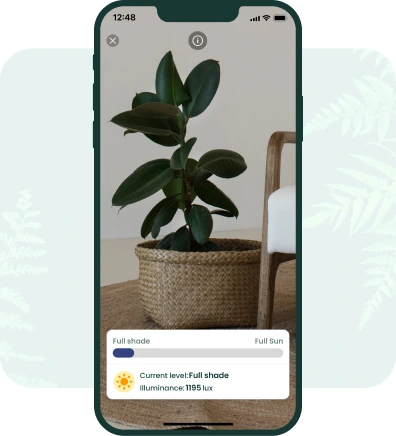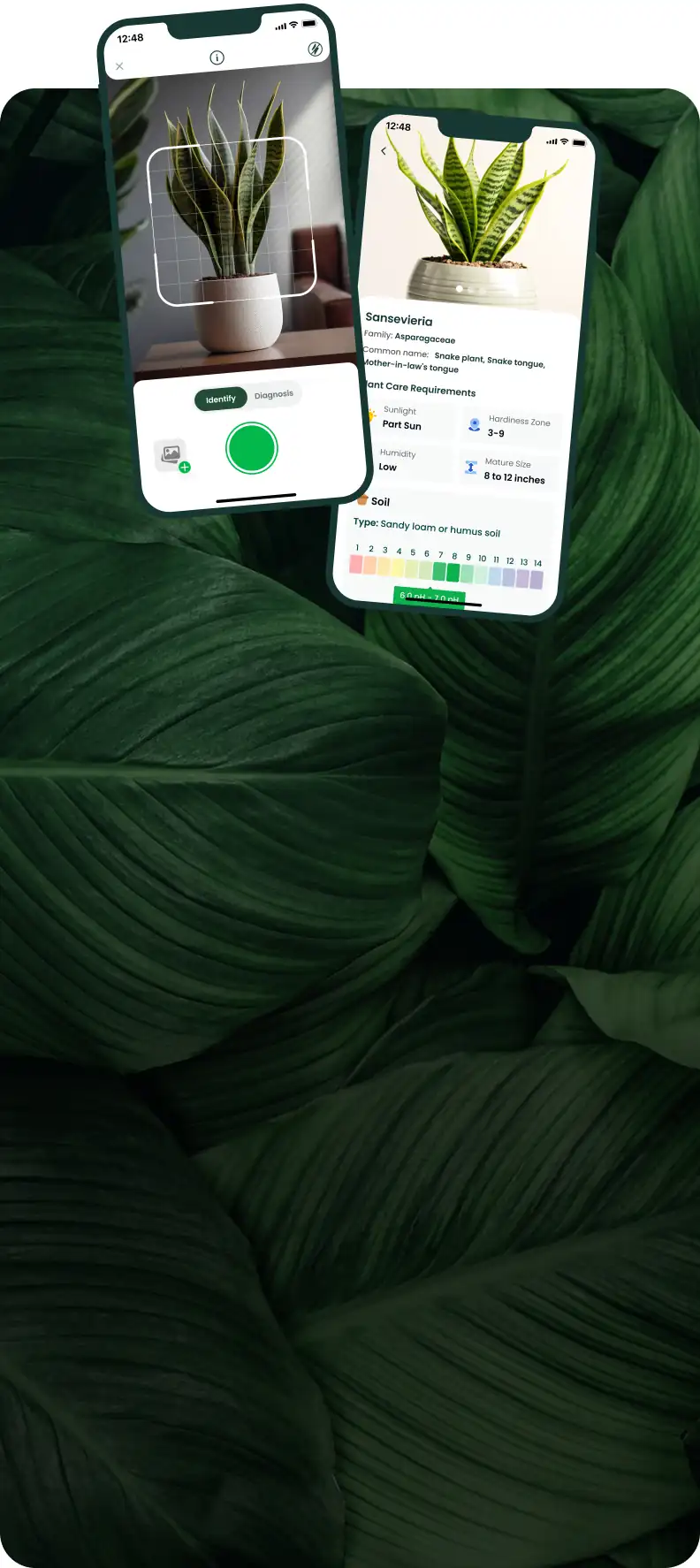Light Meter for Plants: Find the Perfect Spot to Grow
Not all plants thrive in the same light. Some are shade seekers, others bask in full sun… But with our AI Plant Finder, one may easily measure the brightness levels of their surroundings. Know exactly where your green companions will thrive with the best light meter app so far.

How to Use a Light Meter for Plants
- Open AI Plant Finder, head to the Explore tab, and scroll down to find our Light Meter tool.
- Point your camera at the location where you wish to place your greens.
- Get instant feedback – the app measures the light intensity in lux, indicating whether it is a low-, medium-, or bright-light area.

Plant Light Meter Chart
| Level | Description | Ideal for |
|---|---|---|
| Low (50-200 lux) | Little to no direct sunlight (mostly shaded or indirect) | Ferns, Pothos, Peace Lilies |
| Medium (200-800 lux) | Some indirect sunlight (filtered through curtains/windows) | Calatheas, Philodendrons, Ficus |
| Bright Indirect (800-2000 lux) | Lots of indirect light, close to windows but not in direct sunlight | Aloe Vera, Anthuriums, Orchids, Herbs |
| Direct (2000-5000 lux) | Full sunlight for several hours during the day | Cacti, Succulents, Ficus, Lavender, Tomatoes |
| Very Bright (5000+ lux) | Full sun exposure all day long | Succulents, Bougainvillea, Sunflowers, Agave, Crotons |
Understanding Light Levels for Healthy Plant Growth
As soon as the illumination conditions are measured, it is time to match those results with what your garden truly needs.
Scan your plant via the Plant ID feature or find it manually using the Search tab to explore detailed care requirements, including preferred light levels. Finally, spot a location that provides just the right amount of sunshine or shade for healthy growth. That’s it.

300,000+
Plants in our database
97%
AI Accuracy of plants recognition
98%
Accuracy of diseases recognition
Frequently Asked Questions
Yes, it absolutely can! With the right app installed (a nod to AI Plant Finder) with a built-in lux meter, your smartphone may be a powerful tool to measure lux intensity around your greenery. No extra hardware needed.
Lux meters can be quite accurate. Our free light meter app for plants uses your phone’s sensors to provide reliable estimations and help you choose the best conditions for your leafy friends.
Certainly! iPhones are equipped with sensors that, through apps like AI Plant Finder, can measure brightness levels effectively.
Yes. Most modern smartphones can measure lux intensity using their built-in sensors, but via dedicated apps.
It depends on the species. Some need bright, direct light (e.g., succulents), while others thrive in low light (e.g., peace lily). Use the best free light meter app to match the species’ preferences with your environment.
Any, when inappropriate. Too much direct sunlight can cause leaf burn, dehydration, or bleaching. UV-heavy or very intense artificial lights can also be harmful. Preliminary estimates matter.
Not for long. Light is essential for photosynthesis. While some tolerate low light, all species still need at least some level to survive.
These are pothos, philodendron, peace lilies, etc. They are perfect for shady corners or spaces without direct sun.
Yes, you can. Indeed, specialized grow lights are ideal, yet many LED tools can support growth. Ensure the intensity and duration that suit your plant’s needs.
Sometimes, yet not always. Standard indoor illumination may help low-light plants survive, but it typically lacks the intensity for optimal growth.
A lot. Indirect illumination can be the difference between thriving and surviving. It means the plant receives bright ambient light without being scorched by direct sunbeams. This is perfect for many popular species held at home, e.g., ferns, calatheas, and peace lilies.
